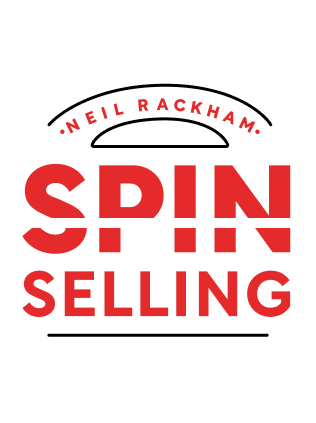

This article is an excerpt from the Shortform summary of "Spin Selling" by Neil Rackham. Shortform has the world's best summaries of books you should be reading.
Like this article? Sign up for a free trial here .
What are SPIN selling questions? What do they have to do with sales strategy?
The SPIN method is based off of questions and their solutions. SPIN selling questions help you establish a relationship, find out customer needs, and work towards solutions that complete the sale.
What Are SPIN Selling Questions?
In traditional sales, reps emphasize product features and use standard techniques to address objections and close a sale. In contrast, successful reps ignore traditional techniques and instead focus on asking four different types of questions in a certain order, the SPIN sequence or SPIN selling questions. Here’s how to use this process:
1) S-Situation questions: Start by asking fact-finding and background questions, such as, “What do you see as the company’s biggest growth opportunities?” Asking too many of these SPIN questions in sales can impose on the customer’s time and patience, so use them judiciously.
2) P-Problem questions: Once you understand the customer’s situation, ask questions that explore problems or issues your product or solution can solve—for instance, “Are you concerned about meeting your clients’ quality standards with your aging equipment?” Less experienced reps don’t ask enough of these questions.
3) I-Implication questions: Asking good situation and problem questions may be enough to win a small, uncomplicated sale. However, you need to go further in large sales and ask more sophisticated SPIN questions that explore the implications or ramifications of a customer’s problem—for example, “How will this affect your fourth-quarter results?” or “What will this mean for your biggest customer?” The point is to underscore a problem’s significance, and create an urgency to address it. These are more difficult questions to frame, even for experienced salespeople.
4) N-Need-payoff questions: These questions lead the customer to articulate the benefits of your product or solution. For example, you might ask, “How useful would it be if we could increase your output by 10%?” or “How would being able to reduce errors help you?” When the customer links the value of solving a problem with the capabilities of your product, he’s more inclined to accept your product as the best solution. Need-payoff SPIN questions contribute strongly to success in large sales.
Situation Questions
Situation questions are intended to gather facts and background information about the customer’s situation. They’re the first SPIN selling questions asked during a sales call. They’re aimed at getting to know the customer personally and learning about the business and how it operates.
Examples are:
- “How long have you been in your position?”
- “Do you make buying decisions?”
- “What’s your company’s annual sales volume?”
- “What equipment do you use? How old is it?”
Problem Questions
These SPIN selling questions are problem questions. Problem questions are intended to reveal implied needs. They ask customers what their problems and frustrations are.
Examples include:
- How is your current equipment working for you?
- What are the shortcomings of your system?
- Does your aging equipment create problems for you with quality or speed?
Research indicates that:
- In all sales, problem questions impact success more than situation questions do.
- In smaller sales, problem questions are a predictor of success. The more problem questions a rep asks, the more likely she’ll make a sale. When reps get training to ask problem questions in small sales, their sales jump.
- In successful small sales, reps ask twice as many problem questions as reps do in unsuccessful small sales.
- In larger sales, problem questions don’t have a major effect on sales success (discussed below).
Implication Questions
Implication questions are the first step in building implied needs into explicit needs big enough to require action. These SPIN questions in sales explore the larger implications, ripple effects, or consequences of a seemingly small problem, making it bigger. Examples are:
- Could the limitations of your equipment be costing you new business?
- Do your equipment problems increase turnover or make it more difficult to hire operators?
- Is this leading to increased costs?
Research indicates that:
- Implication questions contribute strongly to success in larger sales.
- They increase the customer’s perception of value: when a problem seems big, your solution seems more valuable or worth the price.
Need-Payoff Questions
Last on the list of SPIN selling questions are need-payoff questions. While implication questions emphasize the magnitude of the problem, need-payoff questions emphasize the value of your solution. These are positive questions about the benefits of solving a problem using your solution. For example:
- How would this help you?
- What would be the benefits of solving this problem?
- What makes this solution useful to you?
Research shows that:
- In larger sales, need-payoff SPIN questions in sales contribute strongly to success.
- By encouraging the customer to identify the benefits of your solution herself, these questions make your solution more appealing.
SPIN selling questions are what the SPIN strategy is all about. By practicing your SPIN selling questions, you’ll learn to master the art of SPIN sales.

———End of Preview———
Like what you just read? Read the rest of the world's best summary of Neil Rackham's "Spin Selling" at Shortform .
Here's what you'll find in our full Spin Selling summary :
- What the SPIN in SPIN Selling stands for
- How to demonstrate real value to the person you're selling to
- How to get commitment from your customer to close the sale fast






